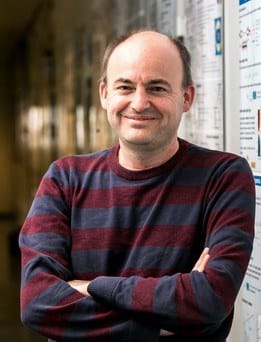Jürgen Volz
Quantum optical nonreciprocal devices based on chiral interaction of light and matter


Date & heure
01/02/2017
Lieu
CdF, salle 2
Accueil
Micro- and nanophotonic components such as optical nanofibers confine light at the wavelength scale and enable the control of its flow in integrated optical environments. The strong confinement of light leads to an inherent link between its local polarization and propagation direction – the light obtains a chiral character. This fundamentally alters the physics of light-matter interaction and gives rise to phenomena such as highly directional spontaneous emission and direction-dependent coupling strengths [1].In my talk I will introduce the underlying principles of this chiral light-matter interaction. Then I will present how we employ this effect to realize low-loss nonreciprocal transmission of light at the single-photon level through a silica nanofiber [2]. We use two experimental approaches where an ensemble of spin-polarized atoms is weakly coupled to the nanofiber-guided mode or a single spin-polarized atom is strongly coupled to the nanofiber via a whispering-gallery-mode resonator. We observe a strong imbalance between the transmissions in forward and reverse direction of about 10 dB for both systems while, at the same time, the forward transmissions still exceed 70%.By interfacing a whispering-gallery-mode resonator with two nanofibers we extended this system to a 4-port device, where a single atom routes photons nonreciprocally from one fiber port to the next, thus realizing a quantum optical circulator [3]. The demonstrated systems exemplify a new class of nanophotonic devices based on chiral light-matter interaction. Since their operation direction can be controlled by individual quantum emitters, such devices could even be prepared in a superposition of their operational modes which allows their integration in future quantum information processing and quantum simulation experiments.[1] P. Lodahl et al., arXiv:1608.00446 (2016)[2] C. Sayrin et al., Phys. Rev. X 5, 041036 (2015)3] M. Scheucher et al., Science 354, 1577 (2016)
